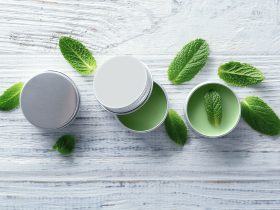For individuals looking to boost hair growth, integrating hair oil into their routine is paramount. These oils, often regarded as liquid gold, contain components that stimulate follicles, enhance blood circulation in the scalp, remove buildup that causes inflammation, and provide moisture to hair strands. These elements collectively foster an environment conducive to healthy hair growth.
While there are numerous recommended oils to choose from, the application method matters just as much. Incorrectly applying oil can significantly impact your hair growth goals.
Here are the top 3 most common mistakes in hair oiling and how to fix them:
-
Using too much oil
Over-application of hair oils is a common misstep that can yield results far below what you would expect. While it might not be problematic when applied before shampooing or for specific styles like sleeked-back hair, excessive use could create issues, especially if planning to style the hair after the application.
Using an excessive amount of oil can lead to hair feeling weighed down or appearing overly greasy, particularly for those with finer hair textures. To avoid these pitfalls, it is recommended to begin with just a few drops of oil and adjust the quantity as needed throughout the application process.
For optimal results, select a lightweight yet deeply penetrating oil. It’s important to note that different oils serve distinct purposes.
Some focus on strengthening hair strands, while others target scalp health and are best suited for overnight or pre-shampoo treatments. This differentiation is key since a more liberal application can be suitable for overnight use.
When it comes to scalp treatments, argan and rosemary oils are the ones that get recommended the most by specialists. However, it is very important to massage these oils into the scalp to stimulate circulation and enhance the absorption of essential nutrients.
-
Mixing oils of different densities
When it comes to using various oils for hair care, there’s a broad spectrum of densities and consistencies. Some oils are thick and heavy, like coconut or olive oil, while others are lighter and more absorbent, such as argan or jojoba oil. Understanding these differences is crucial when combining oils for hair treatments.
Combining heavy and light oils might impact the texture and absorption of the oil mixture, potentially affecting how well it works on your hair. However, pairing oils with similar consistencies, especially lightweight ones like argan or grapeseed, can enhance their benefits without making your hair feel weighed down.
Experimenting with various oil combinations might require a bit of trial and error. Sometimes, mixing oils with contrasting densities might result in hair feeling limp or greasy. However, it’s a learning process, and even seasoned pros can encounter difficulties, it’s all part of the journey to find what works best for your hair.
3. Not taking into account timing & color
Timing is an essential factor in maximizing the benefits of hair oils. How you apply the oil can significantly impact its effectiveness.
Applying oil to damp hair serves to lock in moisture, preventing dryness, and enhancing the hair’s shine. Conversely, applying oil sparingly to dry hair can give it a lustrous finish without leaving it looking greasy.
Whether massaging oil into the scalp as a pre-shampoo treatment or applying it to dry hair, your choice should align with your specific hair care regimen and preferred timing. Achieving noticeable benefits, such as improved hair growth, demands consistency and dedication over time.
Moreover, certain oils, such as argan and olive oils, may contain subtle golden or yellow hues. These tones have the potential to subtly modify hair color, especially for individuals with blonde or silver-toned hair.
It’s crucial to consider this aspect when selecting an oil for your hair care routine. For those with color-treated or mature hair, opting for clear oils might be the safest choice to avoid any unintended alterations in hair color.
How to oil your hair the right way in 3 simple steps
To rectify these common mistakes, it is imperative to adopt a meticulous hair oiling regimen that caters to individual needs.
Here are some crucial steps to ensure the effectiveness of your hair oiling routine:
Step 1: Choose the appropriate oil
Conduct a thorough analysis of your hair type and concerns before selecting an oil. Consider oils rich in essential fatty acids, such as almond oil or avocado oil, for repairing damaged hair, or opt for rosemary oil to stimulate hair growth.
Step 2: Application technique
Apply the chosen oil to the scalp and hair strands using gentle, circular motions. Focus on massaging the oil into the scalp for improved blood circulation, enhancing nutrient absorption.
Step 3: Timing and duration
Allow the oil to sit for at least an hour before shampooing. However, if possible, leaving the oil overnight can yield superior results. Remember, consistency is key; adhere to a regular schedule without overdoing it.
Conclusion
Effectively harnessing the potential benefits of hair oiling hinges on mindful and strategic application methods. Simply applying oil without considering crucial factors could lead to suboptimal results.
To truly unlock the advantages of using hair oils, it’s vital to adopt a targeted approach rather than a sporadic one. Embracing a consistent and purposeful routine sets the stage for maximizing the perks.
By adhering to a well-informed approach, individuals can anticipate a significant transformation in their hair’s health and growth potential.
















Find Us on Socials